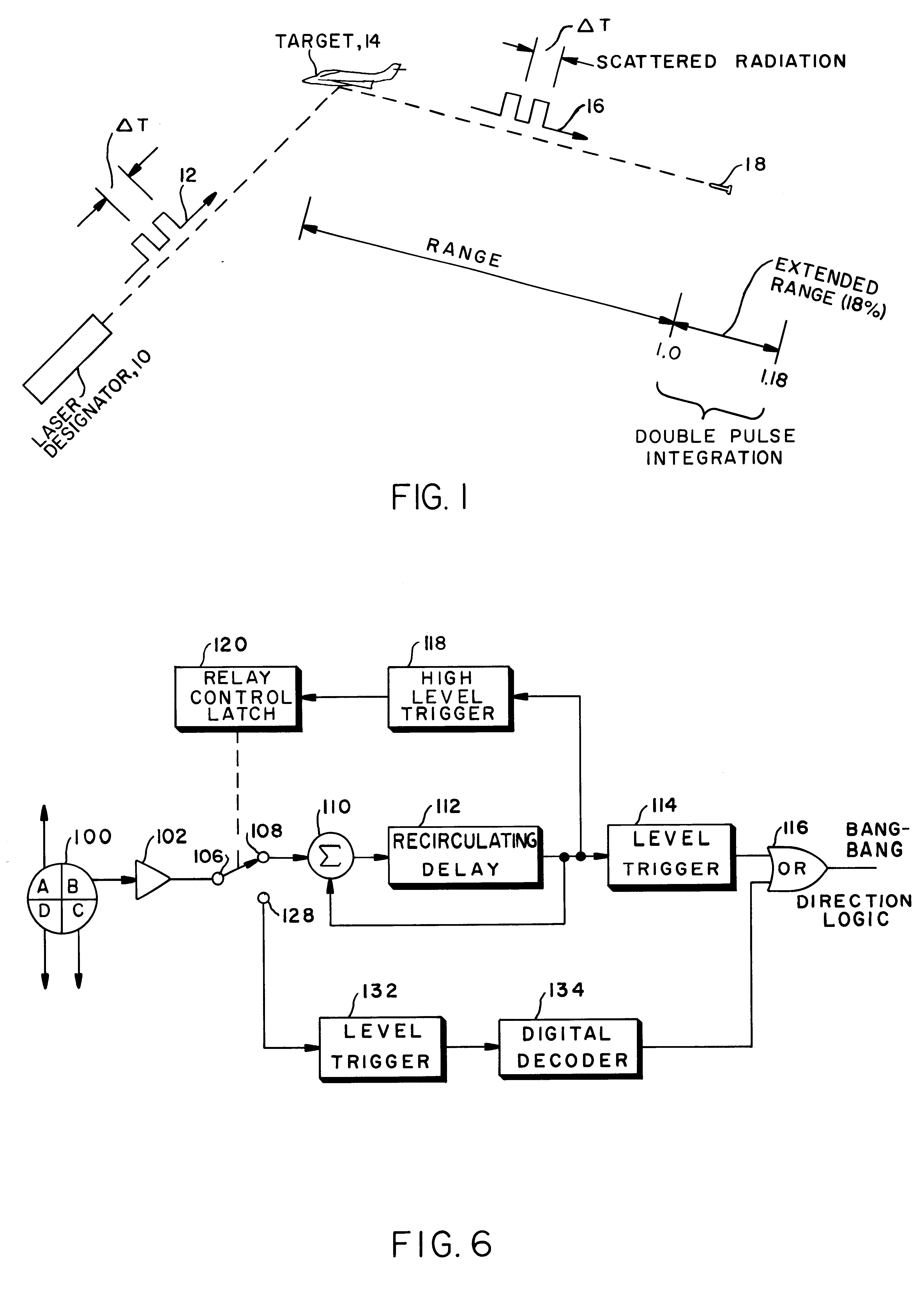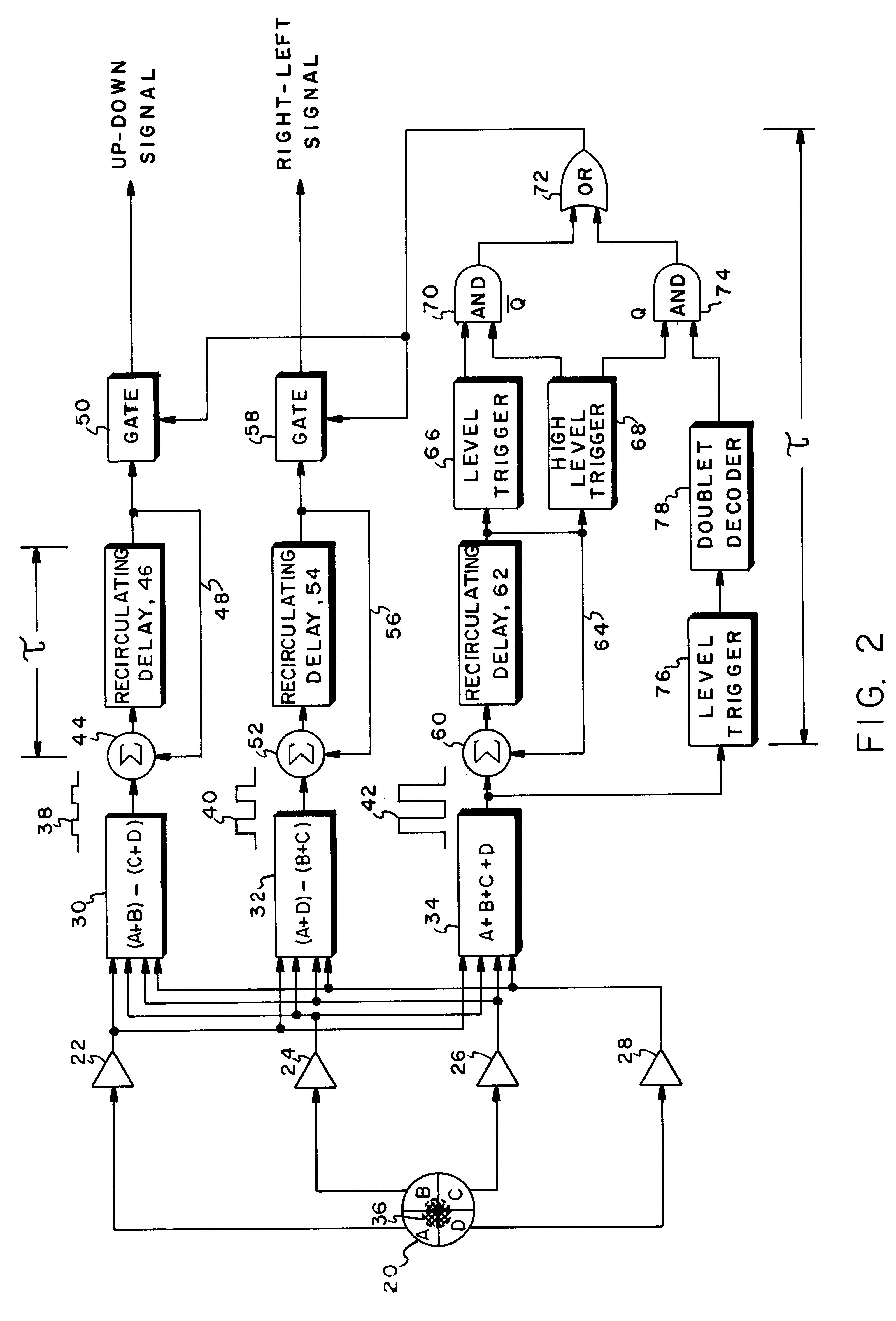Extended range, light weight laser target designator
a laser target and light weight technology, applied in direction controllers, direction/deviation determining electromagnetic systems, instruments, etc., can solve the problems of reducing countermeasure effectiveness, doublet pulse laser target designators suffer from the disadvantage of almost twice the laser energy per doublet pair, etc., and achieve the effect of increasing the signal-to-noise ratio in seekers
- Summary
- Abstract
- Description
- Claims
- Application Information
AI Technical Summary
Benefits of technology
Problems solved by technology
Method used
Image
Examples
Embodiment Construction
[0027]Referring now to FIG. 1, a typical laser target designator system is depicted in which a source of multiple pulses, such as a laser 10, directs a pulse doublet 12 with an interpulse delay ΔT towards a target 14. The target scatters the light from the laser in all directions and scattered radiation in the form of a pulse doublet 16 propagates in the direction of a missile or guided ordinance device 18. Under ordinary circumstances, without pulse integration, the seeker aboard missile 18 would acquire the target at a normalized range 1.0 as illustrated. With the system to be described, target acquisition would take place at an extended range such as that illustrated, which in the doublet pulse case, is on the order of a 18% increase. In one embodiment, the normalized range defines a range perimeter with the target at its center. It is the function of the subject circuit to provide pulse integration circuitry at points outside the range perimeter, while activating doublet decodin...
PUM
 Login to View More
Login to View More Abstract
Description
Claims
Application Information
 Login to View More
Login to View More - R&D
- Intellectual Property
- Life Sciences
- Materials
- Tech Scout
- Unparalleled Data Quality
- Higher Quality Content
- 60% Fewer Hallucinations
Browse by: Latest US Patents, China's latest patents, Technical Efficacy Thesaurus, Application Domain, Technology Topic, Popular Technical Reports.
© 2025 PatSnap. All rights reserved.Legal|Privacy policy|Modern Slavery Act Transparency Statement|Sitemap|About US| Contact US: help@patsnap.com



